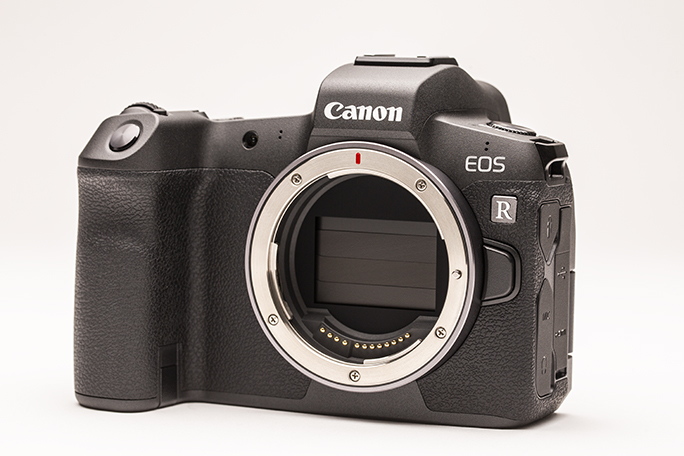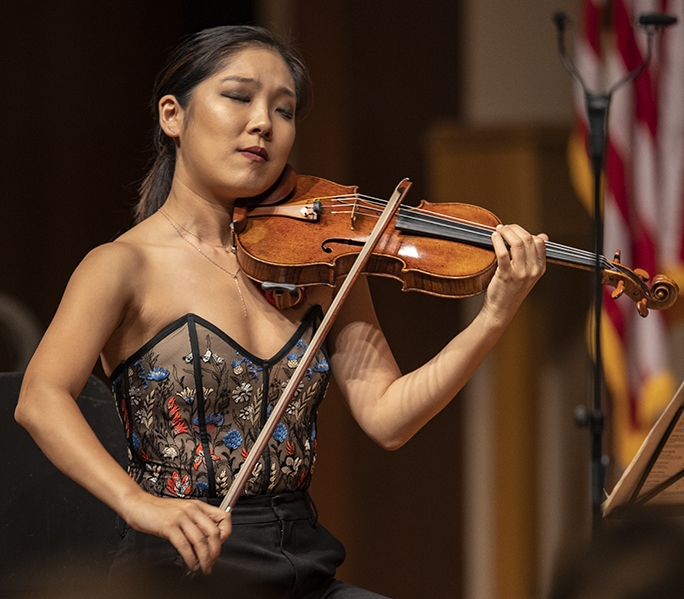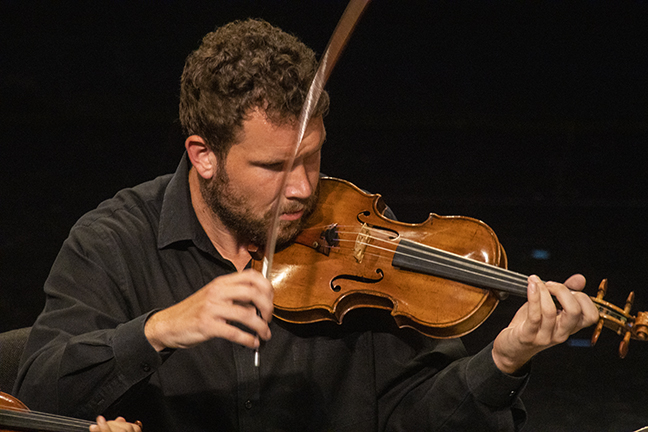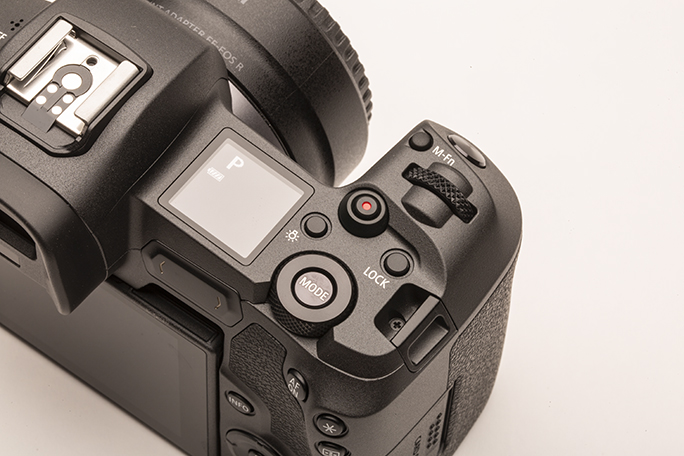
I bought the Canon EOS R camera in May after considerable research and a one-week rental test of the device.
I am the Staff Photographer of Festival Mozaic, a classical music festival in San Luis Obispo. Each year I shoot three events – one each in fall and spring, and then a two-week festival in July and August. On those occasions I take thousands of photos of violinists and cellists and oboeists and flutists (and others). It is a lot of fun and it is occasionally challenging.

One of my biggest problems in the past was the noise made by my Canon 5D camera shutters. They make enough noise that I can’t be in the auditorium while the players are performing. It bothers people in the audience when my shutter (even in “silent” mode) goes wop-clack-snap-wop (over a 60th of a second). I try to shoot only during the forte parts, or from behind glass doors, or from the sound booth in the auditorium – depending on the location.
But the R has a feature that eliminates that problem: silent operation. It is really silent. Though I can hear a nearly-inaudible tick when my eye is on the viewfinder, no one else can hear that sound.
As a result, I can shoot my photos and not bother a soul. That alone is worth the price of admission for me.

I’m in week two of the festival now, and I have shot about 8,000 photos so far. No one hears me click my shutter; no one knows that I am shooting still photos and not video. Almost no one is even aware of my being there. I love that!
In silent mode, the shutter is always open, and the camera samples an image as a slice of time as it passes. As a result of this, I occasionally see a distortion in an image that is a result of the scan of exposure. Instead of exposing the entire sensor at once, the silent mode captures the image as a scan of the sensor, which occasionally bends straight things that are moving (a violn bow is a great example) into strange curved things.

The R has numerous other features that please me. I have come to love the resolution (it’s a 30.1 Mp sensor; 86MB photos result). It’s nice to be able to crop a bit of a photo and still have 50MB left over!
I shot a series of landscape panoramas while on vacation in June, and they come out 30 percent higher in resolution than my previous work. I like that because it makes the finished images more useful for huge prints. The utility of my panoramas is much greater now, and they are more salable.
The sensor is an integral part of the camera’s auto-focus system. Though it can be slow on occasion, I find the auto-focus is more accurate than my 5D cameras, it’s quick to find faces in scenes (it uses facial recognition), and it results in more photos in good focus than I get with my other cameras. I have become more reliant on auto-focus as a result. I am not skeptical when shooting with the R. I manually touch-up the focus much less than I do with my other cameras. It’s easier to shoot photos in focus, and that makes a world of difference to me.

As a person of a certain age (ages starting with the number seven are quickly approaching), I have difficulty seeing through the viewfinder of SLR cameras, and achieving perfect focus has been difficult for me recently. The R solves most of the problems I have with focus, and because it uses an electronic viewfinder, the image is brighter than the viewfinders on my other cameras. I am sold on that, and the LCD screen on the back of the camera (which articulates!). I can touch the LCD image where I want the camera to focus, and it almost always focuses on that object perfectly.
High ISO shooting has become a way of life for me. As I shoot photos of a cellist in Mission San Luis Obispo, which has notoriously bad lighting, I find that ISO 25,600 is a perfectly reasonable speed. This, compared to my SLR cameras, is miraculous. I can gain back one or two stops by using noise reduction in Adobe Camera Raw. The results are excellent.
The R is slightly smaller than the 5Ds, and lighter by a half pound. I enjoy shooting with it; it has become fluid in my hands, and I have made measurable improvement in my work with this camera.
Much criticism has ben leveled at Canon for the R’s poor handling of 4K video. It crops the image on the sensor, and that makes many pundits angry. It makes sense for them to be angry. But I am not angry. I don’t shoot video with this camera. I’m a still photographer. And I love it!
People also criticize the multi-function touch-bar thingee above the right thumb position. I don’t like it either, so I programmed it to do nothing. Problem solved. Maybe they’ll write a software fix for that in the near future, and perhaps I will use it once that fix is made. Meanwhile I’m not bothered by it.
Put me down as a strong supporter of the Canon EOS R camera. I know they didn’t get everything right with this camera, but it’s a professional camera with many features that make my photos larger, better and much sharper than I have been able to make in the past.
